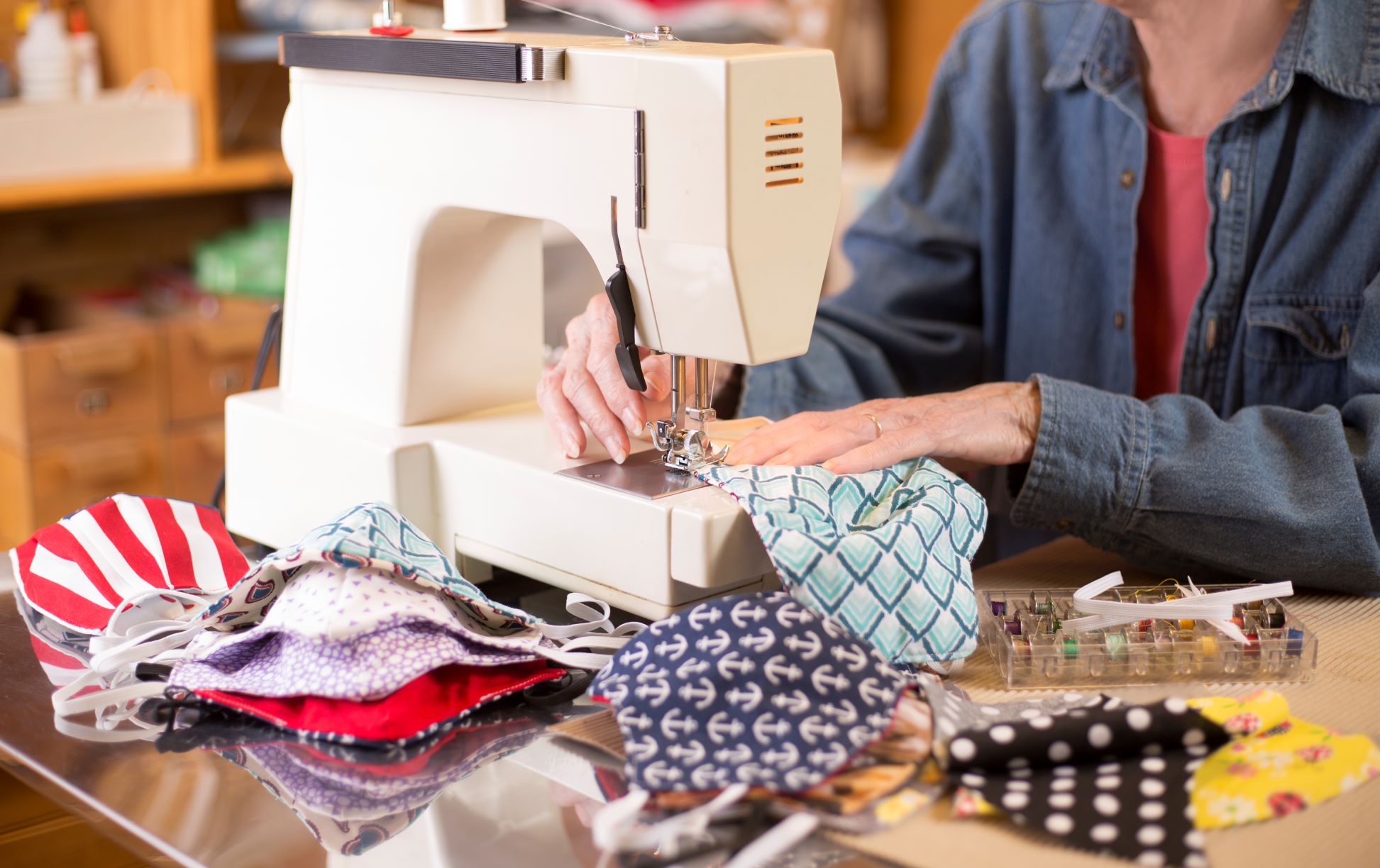
Sewing is a skill that has been around for centuries and continues to be an essential part of our lives. Whether it’s repairing clothes, creating beautiful garments, or expressing our creativity through fabric, sewing is a versatile and rewarding hobby. In this article, we will explore 10 fascinating facts about sewing that will not only pique your interest but also deepen your appreciation for the art of stitching. From the history of sewing machines to the impact of sewing on mental well-being, these facts will highlight the importance and significance of sewing in our modern world. So, grab your needles and thread as we embark on a journey to uncover the wonders of the sewing world!
Key Takeaways:
- Sewing has a rich history and has revolutionized the fashion industry, from the first sewing machine in 1846 to the sustainable sewing practices of today. It’s a versatile skill with therapeutic benefits and a supportive global community.
- Seam allowance is crucial for well-fitting and durable garments, and sewing extends beyond apparel to quilting, upholstery, and more. Technology has also played a significant role in advancing the sewing industry.
The History of Sewing Machines
Sewing machines have been around for centuries, revolutionizing the way we create and repair garments. From its humble beginnings in the 18th century to the advanced machines we use today, sewing machines have played a significant role in shaping the fashion industry.
The Invention of the First Sewing Machine
The first practical sewing machine was invented by Elias Howe in This invention paved the way for mass production of clothing and increased the efficiency of garment manufacturing.
The Different Types of Stitches
Sewing involves various types of stitches, each serving a different purpose. From straight stitches to zigzag stitches, these techniques allow for the creation of beautiful and functional garments.
The Importance of Seam Allowance
Seam allowance refers to the additional fabric left on a garment’s edges to allow for the joining of pieces. It is an essential aspect of sewing as it ensures that the finished product fits well and has durable seams.
The Rise of Sustainable Sewing
In recent years, there has been a growing interest in sustainable sewing practices. Many individuals are opting for eco-friendly fabrics and implementing techniques such as upcycling and zero-waste sewing to reduce textile waste.
The Versatility of Sewing
Sewing is not limited to apparel alone. It is a versatile skill that can be applied to various crafts such as quilting, upholstery, and accessory making. The possibilities are endless when it comes to sewing.
The Therapeutic Benefits of Sewing
Sewing has been known to have therapeutic benefits, promoting relaxation and reducing stress. Many individuals find solace in the rhythm and creativity of sewing, using it as a form of self-expression.
The Evolution of Sewing Patterns
Sewing patterns have evolved over time, from hand-drawn templates to digital patterns that can be easily downloaded and printed. These patterns provide a guide for creating garments and allow for customization and personalization.
The Role of Technology in Sewing
Technology has greatly impacted the sewing industry, from computerized machines with advanced features to software that assists in pattern making and design. These advancements have made sewing more accessible and efficient.
The Global Sewing Community
Sewing has a strong and supportive community that spans across the globe. Through online platforms, sewing enthusiasts connect, share ideas, and inspire each other, fostering creativity and camaraderie.
Conclusion
In conclusion, sewing is a versatile and rewarding craft that offers countless benefits. Whether you’re a beginner or an experienced seamstress, there’s always something new to learn and discover in the world of sewing. From creating your own unique garments to repairing and altering clothing, sewing allows you to express your creativity and individuality.Not only does sewing provide a creative outlet, but it also offers a sense of accomplishment and pride. The ability to transform a piece of fabric into a functional and beautiful item is truly empowering. Additionally, sewing can be a therapeutic activity that helps reduce stress and anxiety. It allows you to focus your mind and immerse yourself in the present moment.Furthermore, sewing is a practical skill that can save you money in the long run. Instead of constantly buying new clothes or paying for alterations, you can mend, customize, and create your own wardrobe. This not only stretches your budget but also helps reduce waste and promote sustainability.In a world that is increasingly reliant on fast fashion and mass-produced goods, sewing allows you to break free from the cookie-cutter mold and express your personal style. So, whether you’re interested in fashion, home decor, or simply want to learn a new skill, give sewing a try! You’ll be amazed at what you can create with just a needle, thread, and a little bit of imagination.
FAQs
1. How do I get started with sewing?
Getting started with sewing is easier than you might think. Begin by investing in a basic sewing machine and gathering essential tools like fabric, thread, scissors, and pins. There are plenty of online tutorials, books, and classes available to help you learn the fundamentals of sewing.
2. What are some common sewing mistakes to avoid?
Some common sewing mistakes to avoid include not properly measuring your fabric, using the wrong thread tension, and not securing your stitches at the beginning and end of a seam. Taking your time and following instructions carefully can help prevent these errors.
3. Can I sew without a sewing machine?
Yes, you can sew by hand without a sewing machine. Hand sewing can be a relaxing and meditative process, and it allows you to work on smaller projects or mend garments with ease.
4. What are some essential sewing techniques to learn?
Some essential sewing techniques to learn include threading a needle, tying knots, sewing straight and zigzag stitches, hemming, and attaching buttons and zippers.
5. How long does it take to become proficient in sewing?
Becoming proficient in sewing takes time and practice. It varies from person to person, but with dedication and regular practice, you can start creating more complex projects within a few months of consistent sewing.
6. Where can I find sewing patterns?
There are numerous places to find sewing patterns, including online marketplaces, sewing pattern books, and even free patterns available on websites and blogs. Additionally, you can create your own patterns by tracing existing garments or using pattern-drafting techniques.
7. Can sewing be a profitable business?
Absolutely! Many people turn their love for sewing into a profitable business by creating and selling their handmade items, offering alteration services, or teaching sewing classes. With the right skills and marketing strategies, sewing can be a lucrative venture.
8. Is sewing only for clothing?
No, sewing is not only limited to clothing. It can be used for creating home decor items, such as curtains, pillow covers, and table linens. Sewing can also be applied to crafting accessories like bags, hats, and even toys.
9. What are the benefits of learning to sew?
Learning to sew has several benefits, including the ability to customize and alter your own clothes, the opportunity to express your creativity, the development of problem-solving skills, and the potential to save money by making your own items.
10. Can sewing help reduce waste?
Yes, sewing can play a significant role in reducing waste by encouraging the use of sustainable materials and promoting mending and upcycling instead of discarding damaged or unwanted clothing.
Was this page helpful?
Our commitment to delivering trustworthy and engaging content is at the heart of what we do. Each fact on our site is contributed by real users like you, bringing a wealth of diverse insights and information. To ensure the highest standards of accuracy and reliability, our dedicated editors meticulously review each submission. This process guarantees that the facts we share are not only fascinating but also credible. Trust in our commitment to quality and authenticity as you explore and learn with us.


